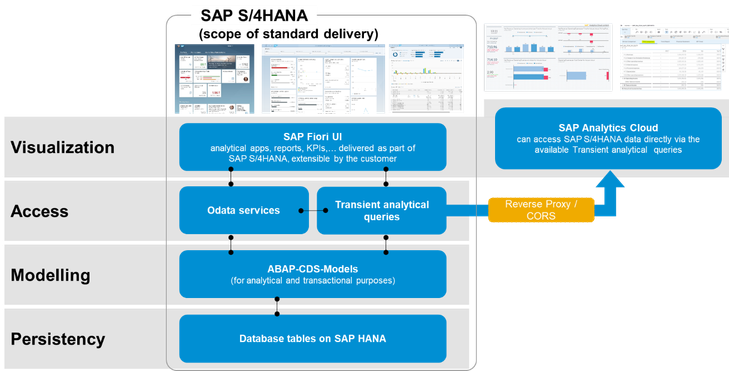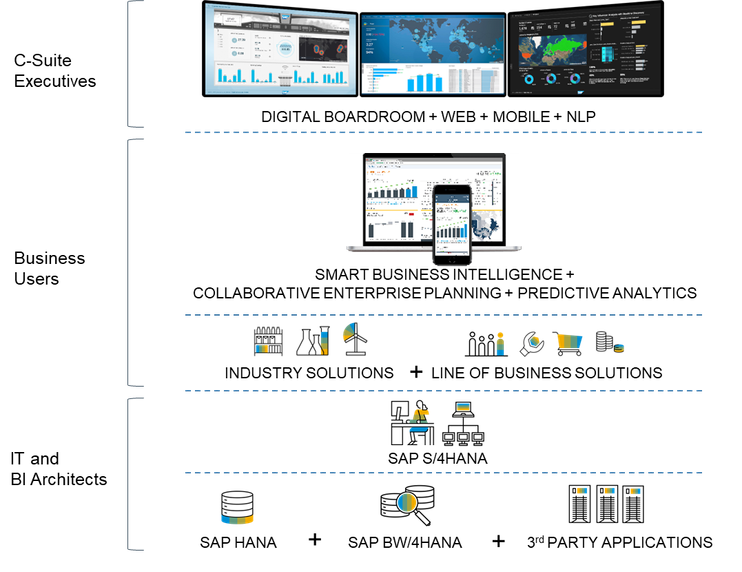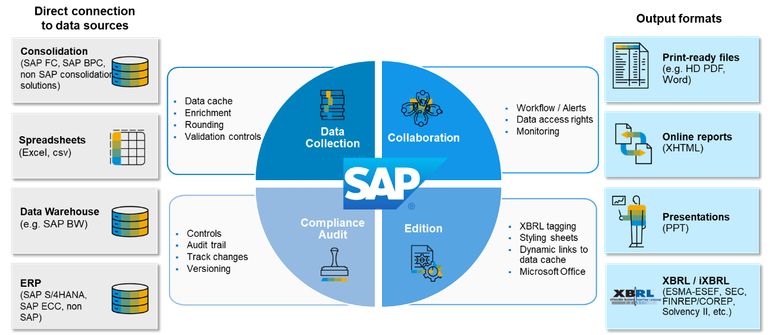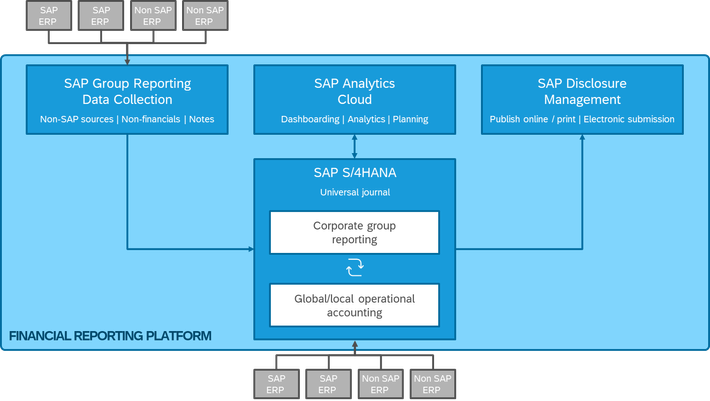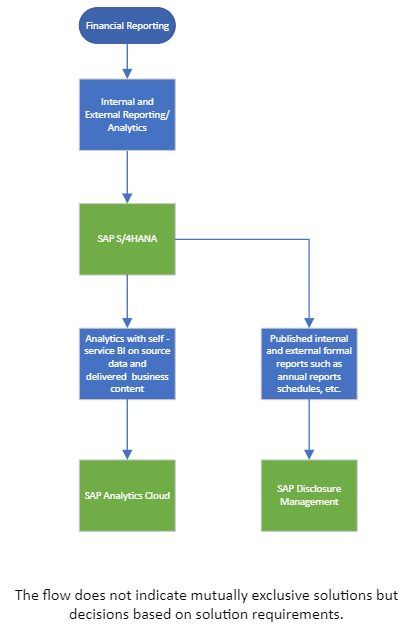- SAP Community
- Groups
- Interest Groups
- Enterprise Architecture
- Knowledge Base
- Architecture Decisions for Financial Analytics Cap...
- Subscribe to RSS Feed
- Mark as New
- Mark as Read
- Bookmark
- Subscribe
- Printer Friendly Page
- Report Inappropriate Content
- Document History
- Subscribe to RSS Feed
- Mark as New
- Mark as Read
- Bookmark
- Subscribe
- Printer Friendly Page
- Report Inappropriate Content
on 12-20-2023 6:54 PM
Summary
This article seeks to provide guidance on choosing the most relevant architecture to support financial analytics needs at an organization. With the SAP Intelligent Suite and specifically based on the Universal Journal in SAP S/4HANA, organizations now have multiple architecture options that come together to deliver this business capability requirement.
The analysis is limited to solution capability directly related to financial analytics and does not address an overall analytical strategy that could include SAP Datasphere, SAP BW/4HANA, etc. The scope covers financial reporting as part of analytics.
For an analysis of group level consolidation solutions and related architecture to support reporting, please refer this article.
The licensing aspects of the components discussed should be considered during target architecture design and is beyond the scope of this evaluation.
Business Requirements
Financial reporting and analytics capability for an organization can be classified into the following broad categories.
- External Reporting: This reporting is targeted at stakeholders outside of the organization such as shareholders and regulatory bodies such as government agencies. They are normally subject to defined standards, such as those prescribed by accounting bodies (for e.g. IFRS) and tax formats. There are usually defined technical standards for transmission of such reports electronically (for e.g. XBRL file formats).
- Internal Reporting: This reporting is targeted at internal stakeholders in the company and serve the function of business control and optimization. All management reporting falls in this category as does operational reporting to support day to day activities.
Traditionally, SAP ERP classified these requirements broadly as ‘FI’ and ‘CO’ reporting but with the introduction of the Universal Journal in SAP S/4HANA, the solution boundaries are technically blurred.
Solution Options
The following solutions are available for the definition of target architecture with the SAP Intelligent Suite.
- SAP S/4HANA
- SAP Analytics Cloud (SAC)
- SAP Disclosure Management
Characterization of the Solution Options
1. SAP S/4HANA
SAP S/4HANA is at the heart of the SAP Intelligent Suite solutions for Finance. It normally serves as the system of record for Finance and by extension is the core data source for financial reporting. It is therefore a mandatory target architecture component for target SAP Intelligent Suite architecture.
SAP S/4HANA addresses the capability need for both internal and external reporting. It is important that organizations leverage the new capabilities available in SAP S/4HANA in the target architecture. The general guidance on this topic is available through SAP Note 2579584 - Recommendations for Usage of Reports in Financial Reporting in S/4 HANA. This guides organizations on how they can leverage Fiori, embedded analytics, CDS (Core Data Services) and deal with possible existing usage of traditional tools such as Report Painter and Report Writer.
SAP’s solution roadmap towards regulatory reporting (primarily taxation) is built around the SAP Document and Reporting Compliance solutions in SAP S/4HANA.
When evaluating organizations that seek standardized group-level financial reporting, unified across multiple source SAP and non-SAP ERPs, it is important to consider the capability offered by SAP S/4HANA for Central Finance for overall standardized group-level financial reporting, distinct from consolidation solutions. Please also refer to this article – Do you have a case for Central Finance?
2. SAP Analytics Cloud (SAC)
The SAC is SAP’s strategic solution for decision support through analytics and simulation. It primarily offers two capabilities – planning and analytics. This article focuses on the latter in the context of financial analytics.
Key technical capabilities that should be considered as drivers for inclusion of the SAC in target architecture for financial analytics are live analytics at the point of decision and action, and the availability of pre-built and customizab....
Live analytics capability can work without moving data from source SAP applications unlike, for example, the traditional Business Warehouse approach with external data persistence.
Pre-built and customizable content means that organizations can leverage best practice Artificial Intelligence (AI) and Business Intelligence (BI) analytical capability for financial information.
A high level conceptual architecture of SAC and SAP S/4HANA is as below.
A role-based approach to this architecture would be the following, with a focus on self-service and BI content.
3. SAP Disclosure Management
SAP Disclosure Management addresses the needs of organizations to formally publish financial data both internally and externally. This involves a collaborative process to extract, create, organize and finally publish the information. Examples of such publications include annual reports, quarterly disclosure statements, schedules to accounts, etc.
SAP Disclosure Management includes specific integration capability to SAP data sources such as BW, S/4HANA, Group Reporting, BPC and offers a fully compliant XBRL tagging and filing structure.
A conceptual view of how SAP disclosure management provides solution capabilities including touchpoints with other finance architecture components is illustrated below.
Given below is an architecture pattern covering all of the above solutions. The inclusion of consolidation component (Group Reporting), while not the subject of this article, is relevant because most disclosure requirements also involve the group close element.
In all cases, please refer to the latest SAP product collateral available on these topics to stay on top of current releases. A good starting point is the Finance and Risk Hub.
Decision Tree
The architectural decision with the listed solution are complementary and not mutually exclusive in terms of a decision tree.
Conclusion
Architecture components to support Financial Analytics capability with the SAP Intelligent Suite has at its core SAP S/4HANA with additional solutions necessitated by additional requirements specific to the organization need. Given SAP’S strategic focus on SAP Analytics Cloud for planning and analytics, it is recommended to base design discussions on SAP S/4HANA complemented by SAP Analytics Cloud as far as possible. The use of SAP Disclosure Management is an advanced capability decision that is normally made based on a primary reporting architecture based on SAP S/4HANA with or without SAC
- SAP Managed Tags:
- SAP S/4HANA Finance
